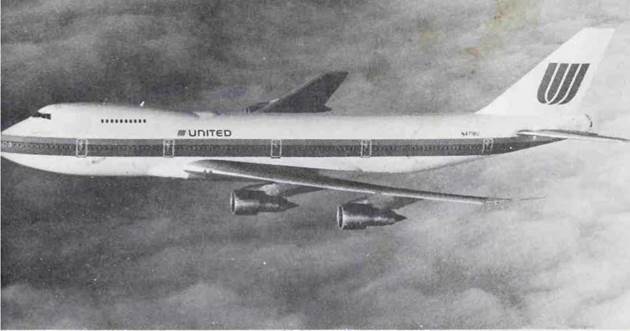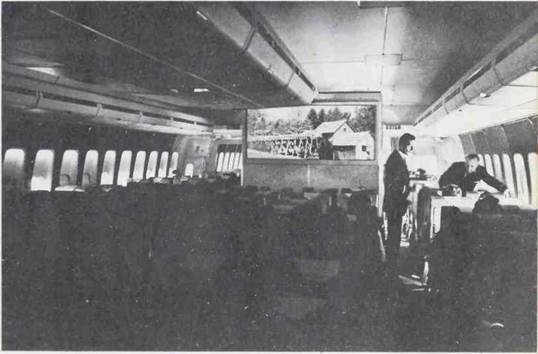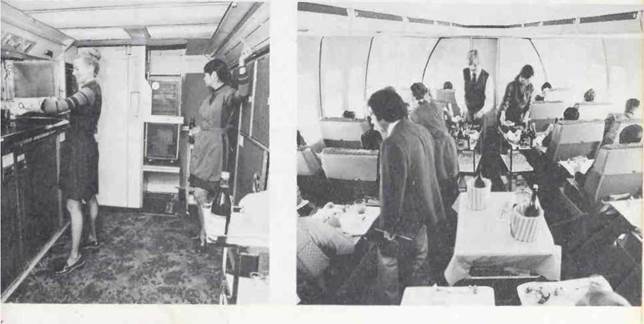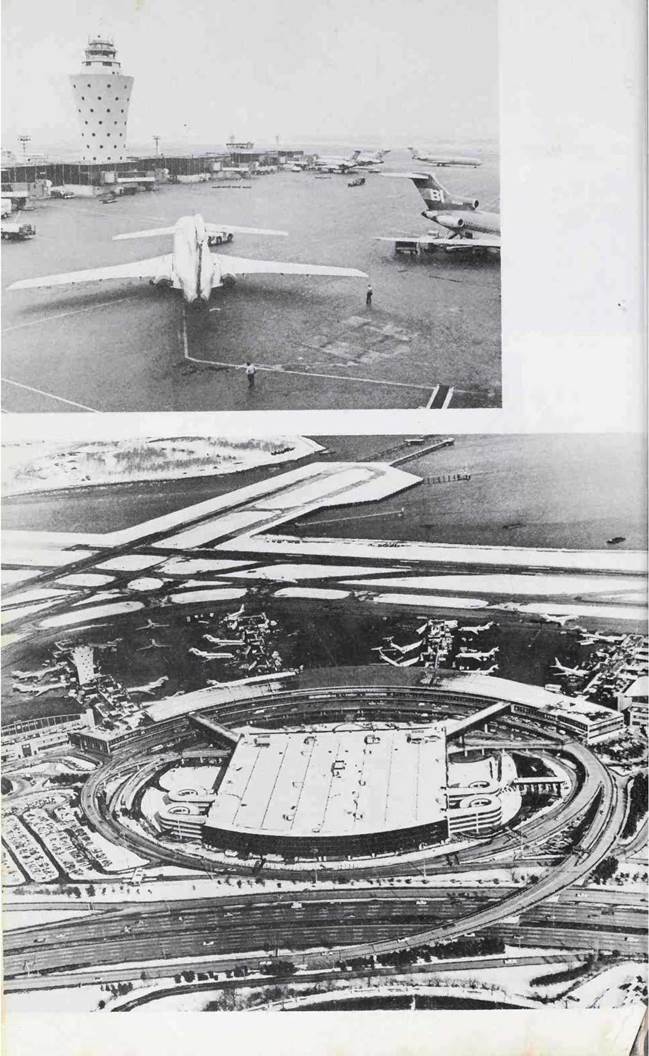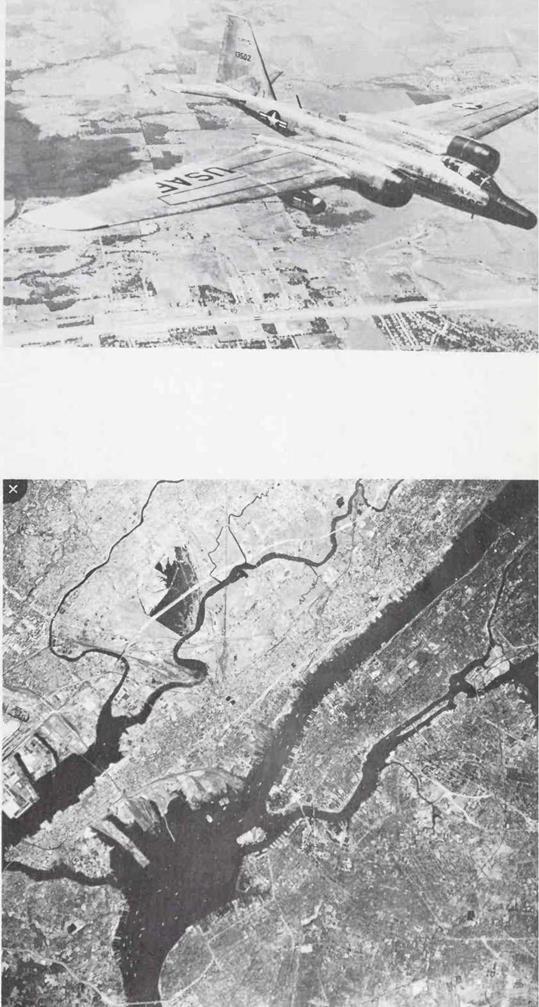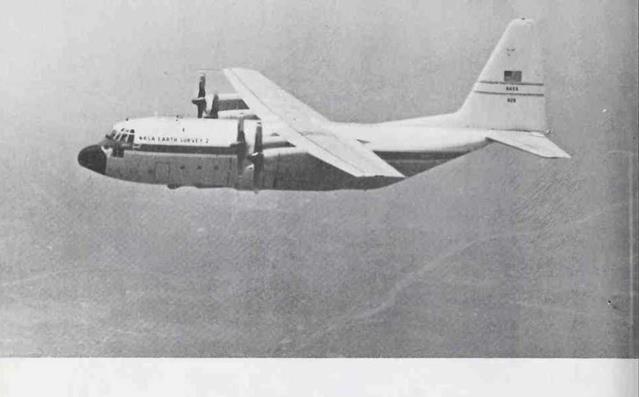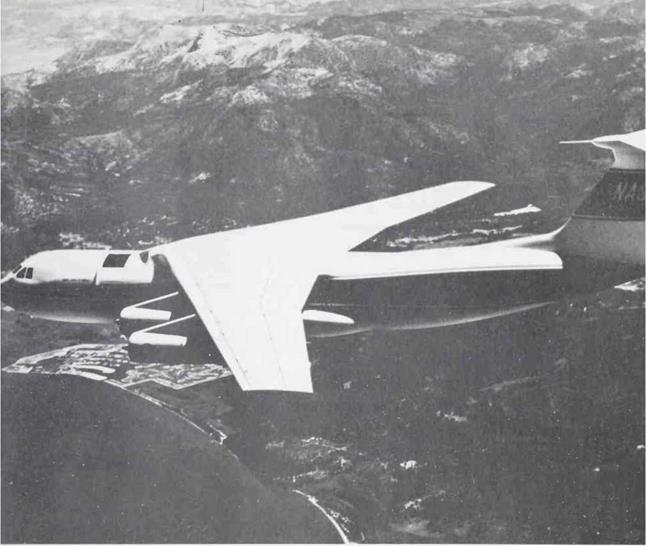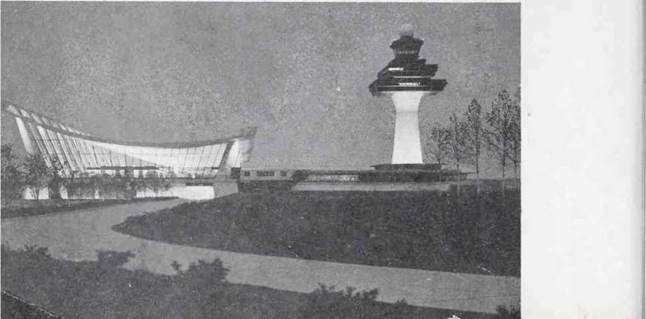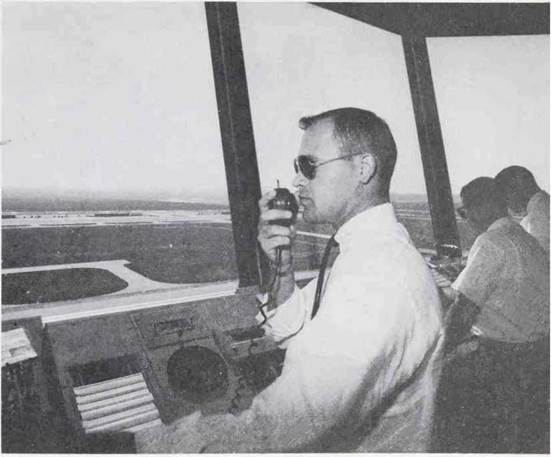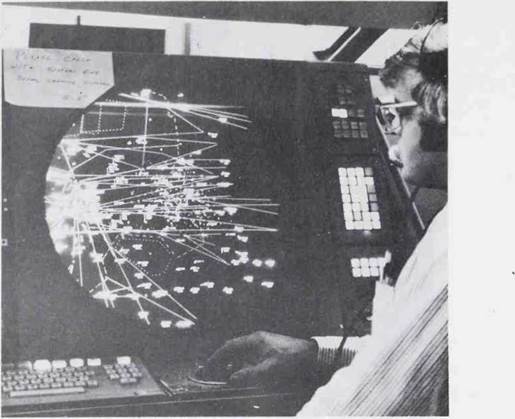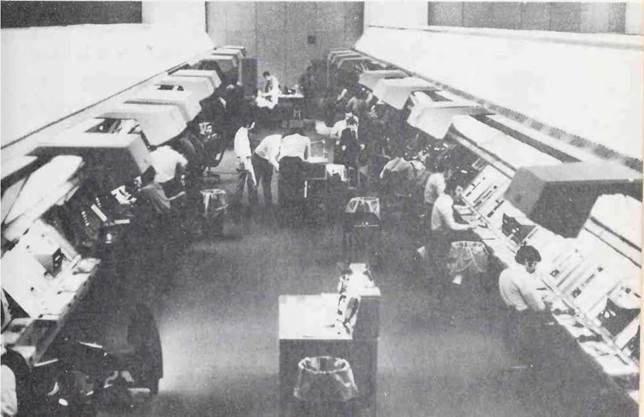An airport complex consists of runways, taxiways, terminal buildings, service areas, hangars, landing aids, and access roads. The aerial view of New York’s La Guardia Airport on the opposite page shows all the parts that make up an airport.
At the top of the photograph, two of La Guardia’s runways project on piles over the water of Flushing Bay. Hangars at the left – and right-hand edge of the photo flank the passenger terminal.
A huge five-level parking garage, which accommodates almost 3,000 cars, is in the foreground of the photo. Two passageways connect the parking facility with the central passenger terminal.
La Guardia Airport has a 150-foot-high control tower. The tower is located in the westernmost arcade of the passenger terminal at the left of the aerial photo. The control tower—designed in the shape of a flared urn—has twelve working levels.
The success of the airlines in the 1960s caused many problems on the ground: Airport facilities throughout the country were inadequate for the traffic. In the late 1960s, for example, Chicago’s O’Hare Airport was handling 600,000 takeoffs and landings a year—more than one a
minute. Airports serving other major cities also found it difficult to accommodate all the aircraft landing and taking off. During periods of bad weather the problems multiplied. There were long delays on the ground and in the air!
New and larger airports were built throughout the United States to solve the problems of handling commercial flights. Most plans to avoid airport crowding recognize the need to establish a system of airports in and around, major cities. New York City—a city hemmed in by other urban areas—has such a system.
The Port Authority of New York and New Jersey operates Newark Airport, Kennedy International Airport, and La Guardia Airport. Teterboro Airport in New Jersey, which is used for business and private aircraft, serves as a reliever airport. In other words, Teterboro is used to reduce congestion at the three primary airports. A second reliever airport is operated at Farmingdale, New York.
Newark Airport is located on 2,300 acres of land between the New Jersey Turnpike and U. S. Route 1. The basic plan of the airport can be seen in the aerial photo on the opposite page. The central passenger area consists of three terminal units. Three jet parking areas are attached to each terminal unit. Two of the terminal units with their six jet parking areas were in full operation when this photo was taken. Only two of the jet parking areas at the third terminal unit had been built at this time.
Runways are the areas on which airplanes make their takeoff roll. A runway is also the area on which a landing airplane touches down. The major runways at Newark Airport are clearly visible in the photo.
Note the two parallel runways just below the six jet parking areas at Newark. These runways stretch for 8,200
feet from left to right across the photo. Can you see that the right-hand end of each of these runways is marked with the number 22?
A runway is marked to the nearest 10 degrees of the compass heading on which it is laid out. The last zero of the compass heading is omitted. Thus, the number 22 on a runway stands for a compass heading of 220 degrees. This means that a plane approaching these parallel runways from the right of the photo is on a heading of 220 degrees. The opposite ends of these runways are marked with the number 4, designating a compass heading of 40 degrees.
There is a third runway at Newark Airport. This third runway, located at the right of the unfinished terminal unit, is numbered 29 at the one end and 11 at the other end. An airplane approaching this runway from the bottom of the photo is on a heading of 290 degrees.











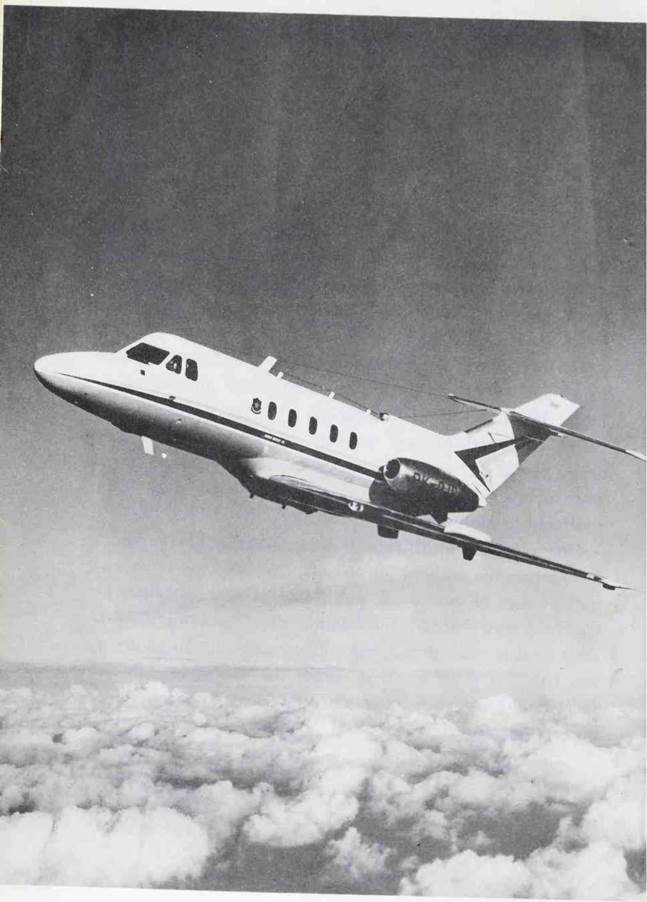
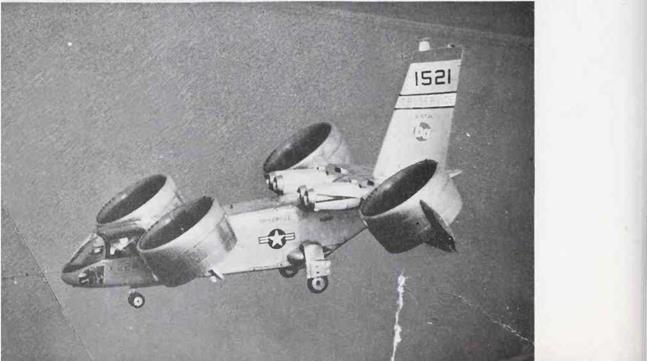
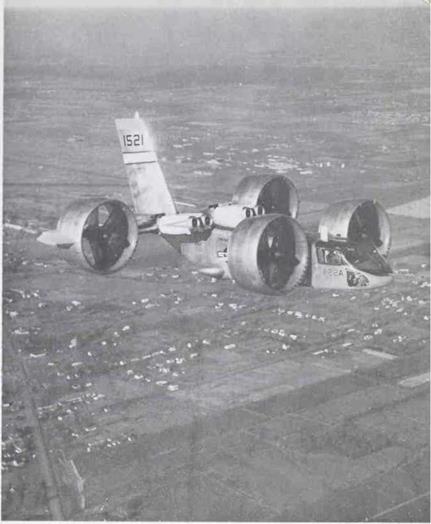
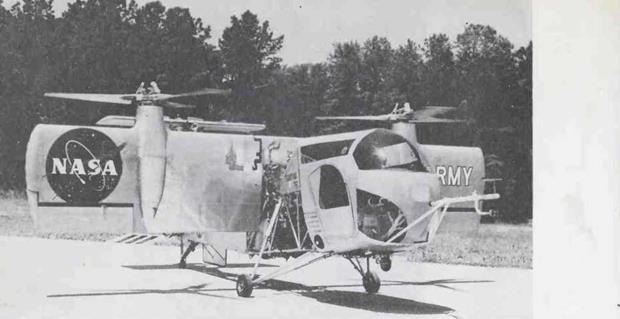
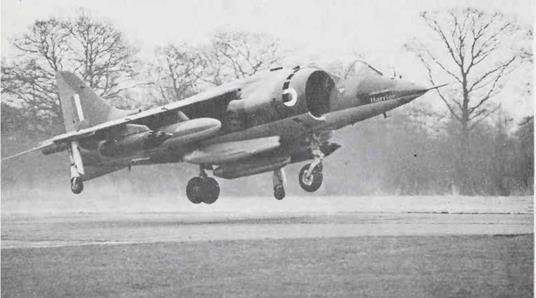
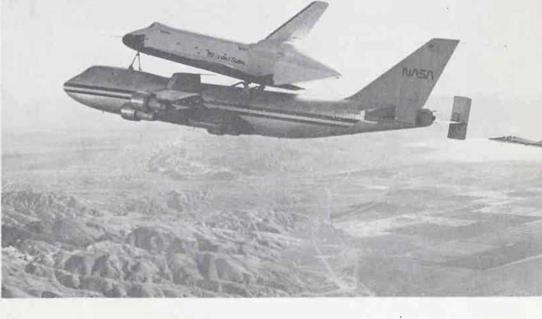
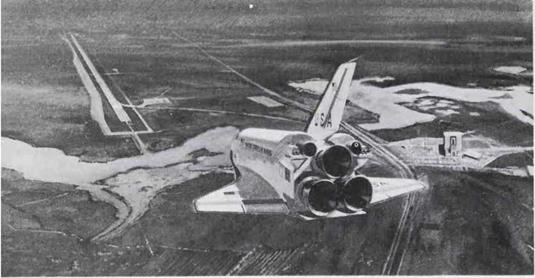
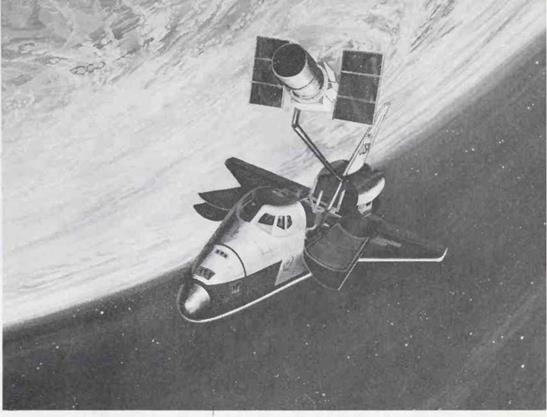
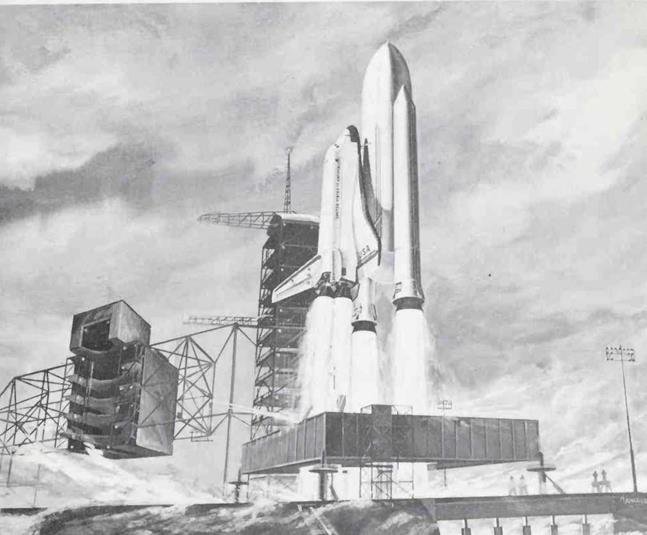
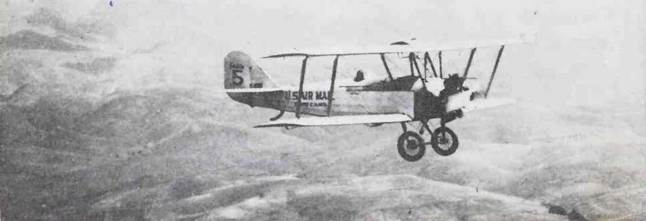
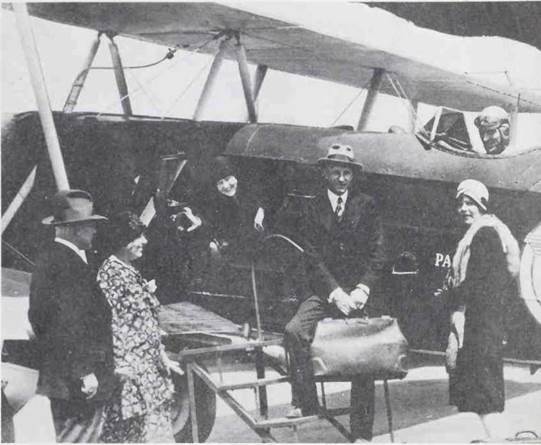
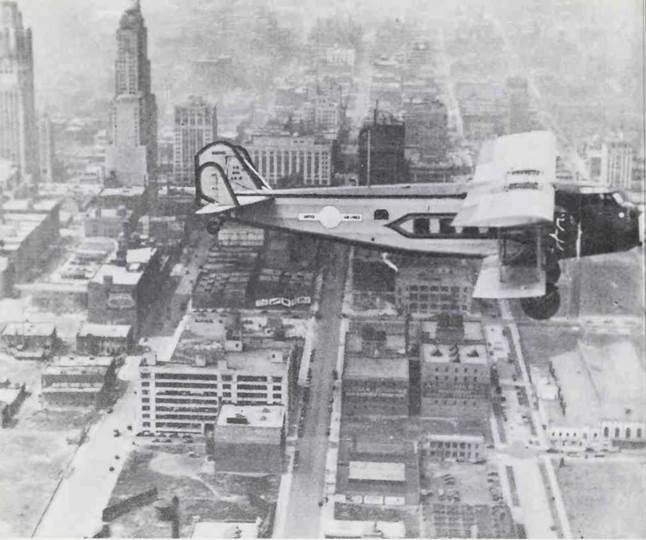
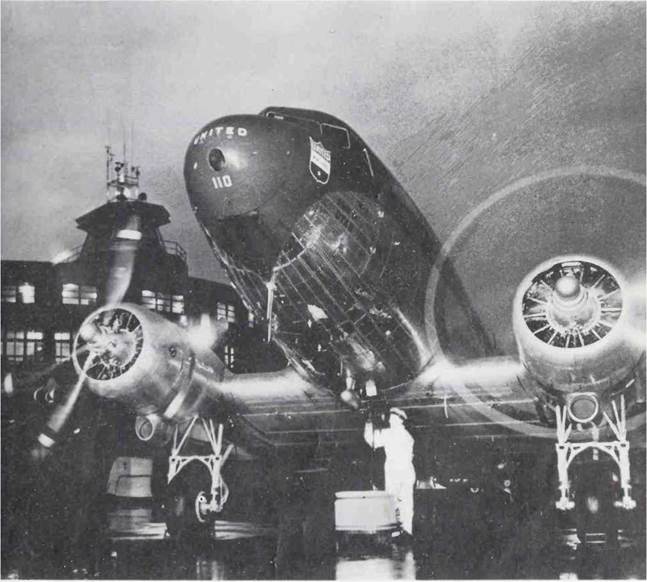
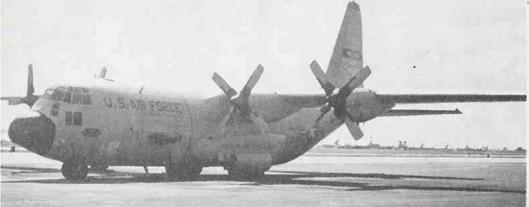
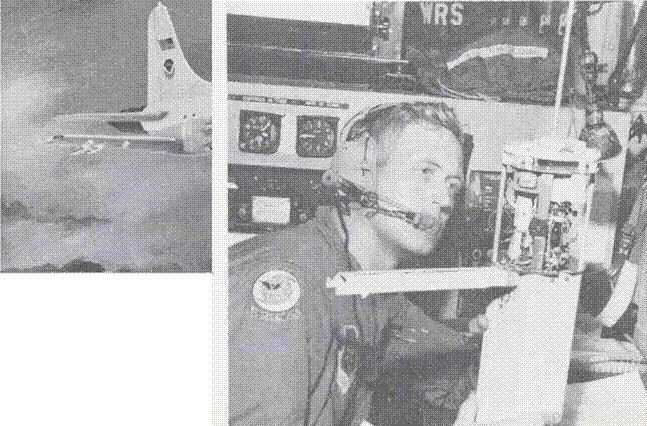
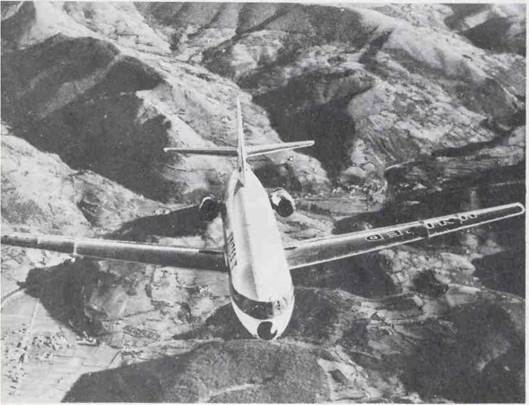
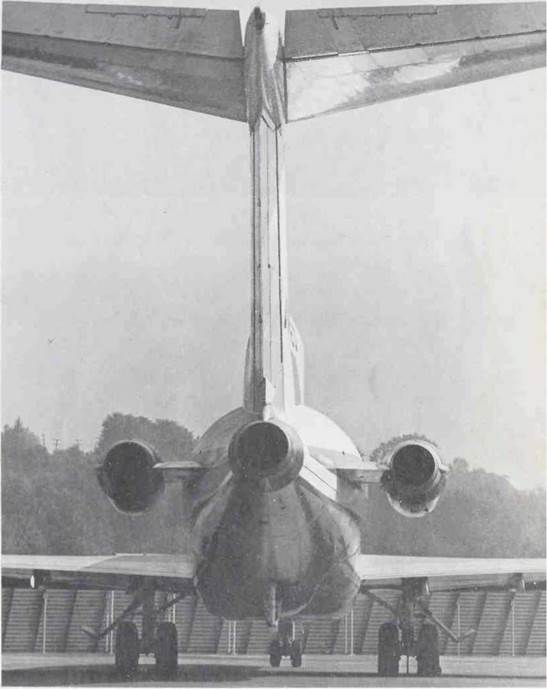
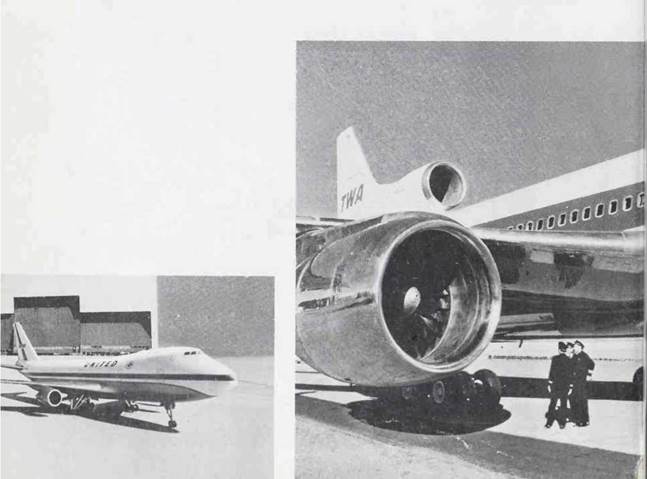
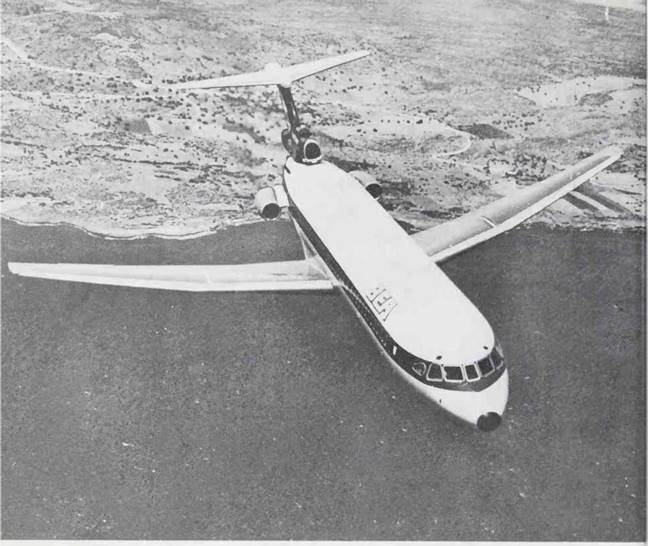
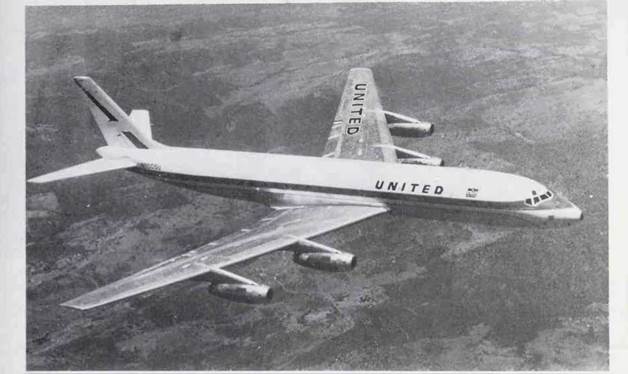 airbus—shown in the lower left photo—can cruise at 600 miles per hour and carry more than 300 passengers for distances of 3,000 miles. The Trident—shown in the upper photo on page 16—is a large-capacity, short-range aircraft. The British Trident can carry up to 180 passengers over a range of 1,500 miles.
airbus—shown in the lower left photo—can cruise at 600 miles per hour and carry more than 300 passengers for distances of 3,000 miles. The Trident—shown in the upper photo on page 16—is a large-capacity, short-range aircraft. The British Trident can carry up to 180 passengers over a range of 1,500 miles.